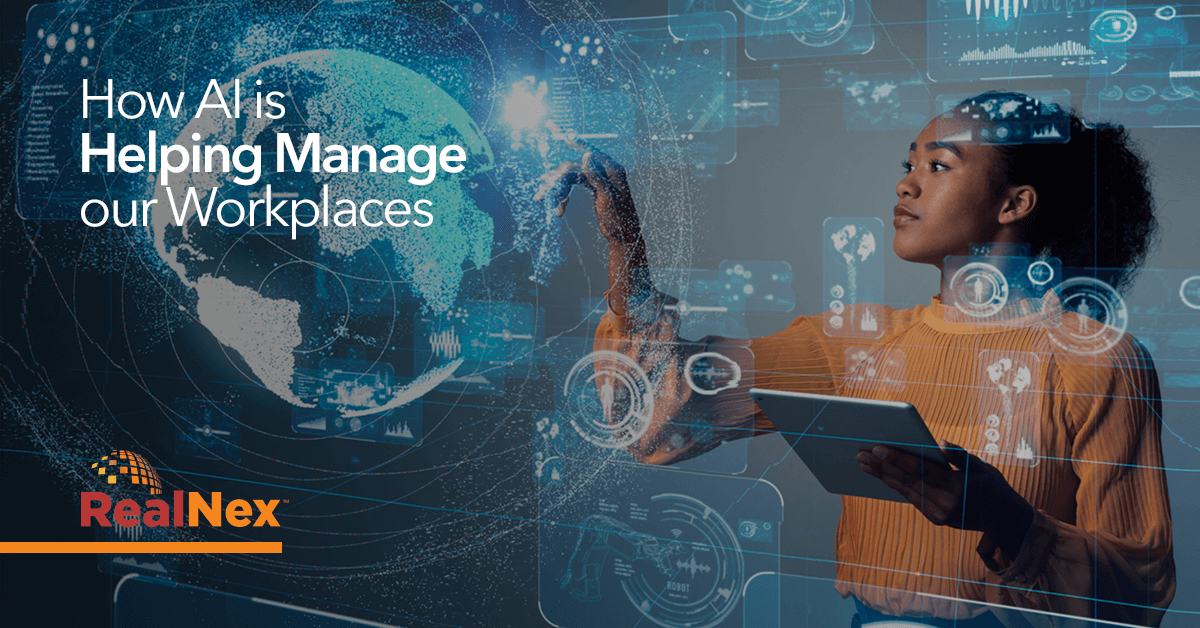This post originally appeared on tBL Marketplace Partner’s, RealNex blog RealNex Media Center Blog and is republished with permission. Find out how to syndicate your content with theBrokerList.
Returning to the office has introduced new challenges to workplace management.
The new hybrid work environment, where some teams report to the office and others maintain remote operations, has challenged the old management model. Today, technology is helping office operators and companies manage both the physical buildings and the way that team members interact with their work environments.
AI is the strongest tool being leveraged to keep offices and their occupants organized during re-entry. As teams approach re-entry with more flexible work schedules that break up the work week between on-site and off-site operations, AI is tracking the data and developing strategies to optimize the experience that employees have while working.
JLL’s recent research report highlights how AI tools are being deployed to manage space requirements and keep office buildings operating smoothly. Here are a few exciting examples of how AI is transforming workplace management and streamlining operations.
#1. Maximizing Use of Space
With teams using their available office space differently, AI is helping companies understand and organize the way that their employees are interacting with their buildings.
AI is able to track the daily occupancy demands of a workplace and form cohesive plans to best use the space. These real-time insights let office managers know how their projected plans for long-term re-entry will actually play out, as well as make automatic adjustments based on the data collected on use and occupancy.
Planners no longer need to guess about what team members will prefer in today’s highly unpredictable work setting as employees shift out of remote work models.
#2. Front of House Concierge Tools
AI concierge tools are seamlessly taking care of the tasks allocated to the front desk.
AI concierge tools can track the movement of employees in and out of the office, assisting with scheduling and planning. AI concierge tools connect individuals, teams, and the back-end of management and operations with seamless data. This helps organize the entire office and improve the experience that team members have on-site.
#4. Cutting Operational Costs
AI is reducing the costs of operations as it manages resources to reduce waste. Buildings are able to cut back on their utility usage and therefore reduce the functional costs by minimizing wasted energy and resources. AI can guide energy usage in the office based on real-time data about the needs of the workforce. Utilities can be allocated to the areas of the office that teams are occupying and reduced in vacant areas.
This helps offices maintain sustainability and improves the efficiency of the commercial space.
#5. Detecting Complex Problems in Real-Time
AI is reducing the potential for disruptive and expensive maintenance issues with its ability to detect complex problems on the property in real-time. A potential elevator outage or even fires are being mitigated by AI sensors that alert property managers before a significant issue occurs. This preventative maintenance is helping offices attain greater longevity.
AI’s ability to fulfill a variety of tasks enables these tools to assist on multiple levels of workplace management. As offices continue to embrace AI as a part of their daily operations, the applications of this tool will continue to expand.
For more commercial real estate news, browse through the RealNex Blog.
![]()



